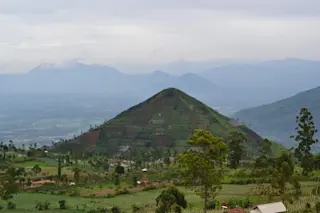Pueblo Bonito taken from the northern rim of Chaco Canyon, New Mexico. (Credit: Douglas Kennett, Penn State University) Before they disappeared in 1130, the Chacoans of New Mexico were a society on par with the Mayans. Without a writing system to speak of, they maintained complex trade partnerships with nearby populations. They lived in sprawling, complex stone mini-cities called "great houses"—the largest of which, Pueblo Bonito in Chaco Canyon, boasted 650 rooms. They Chacoans were one of North America's earliest complex societies, but archaeologists still aren’t sure why they disappeared—climate change and drought are leading theories.Apart from their mysterious disappearance, archaeologists have long sought to understand how Chacoan society was organized. Western Pueblo societies of the period saw relation and rank, as determined by the control of ritual sources of power, traced through the mother’s side of the family. Eastern Pueblo societies determined social rank based on ability and achievement ...
In Ancient Chacoan Society, Women Ruled
Explore Chaco Canyon, New Mexico, where Pueblo Bonito's elite matriline structure offers insights into Chacoan society.
More on Discover
Stay Curious
SubscribeTo The Magazine
Save up to 40% off the cover price when you subscribe to Discover magazine.
Subscribe













